How to sell information products in 2025: ideas + tools

We all know that the internet has made it increasingly possible for anyone to earn money online.
But the question is:
What products are most profitable to sell?
Personally, I’d say information products.
Let me explain:
The most frequently cited reason for startup failure is no market need. However, there’s always going to be a market need for information. People are literally hungry for it, which is quite evident by the very existence of Google Search.
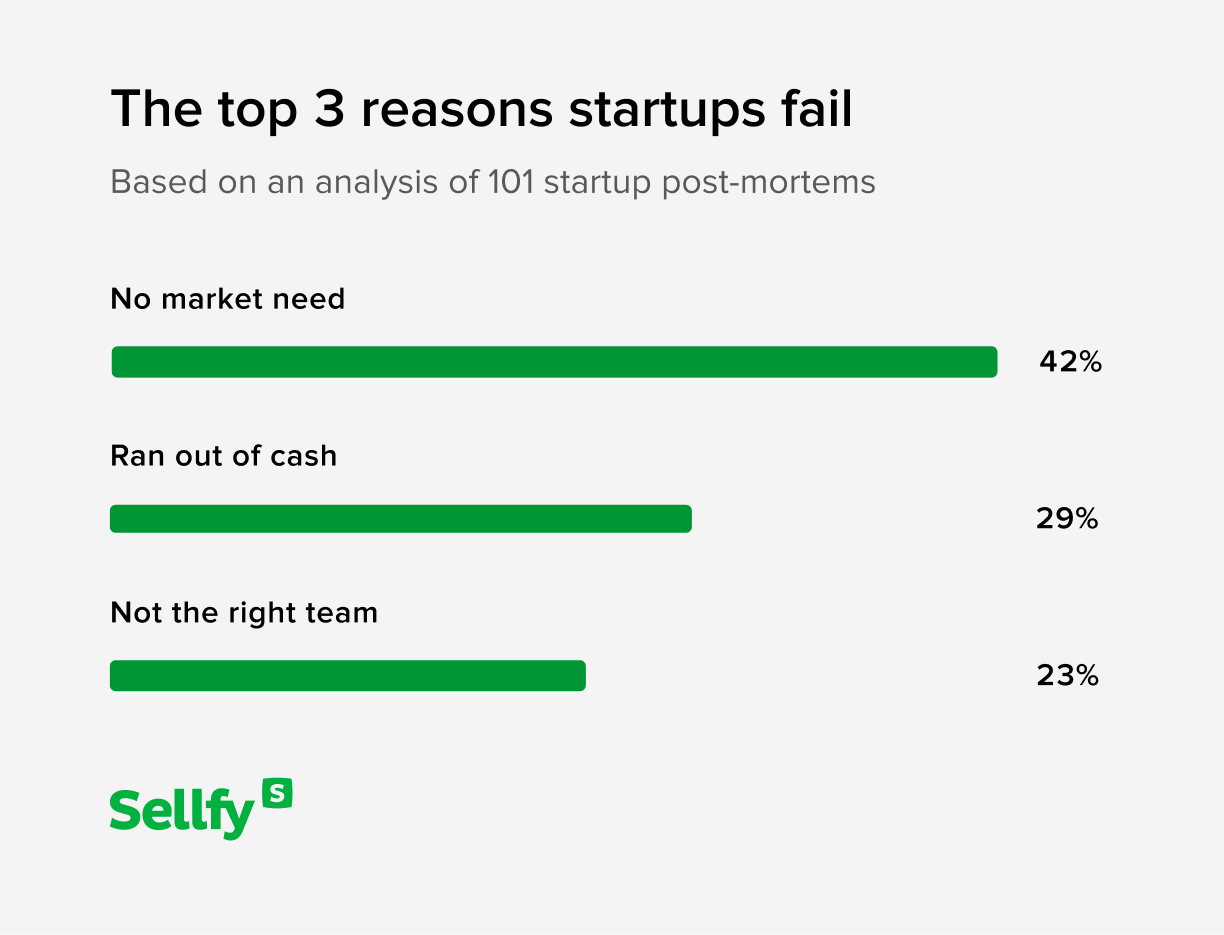
Not only are information products in high demand, but they’re also some of the easiest products to sell. So, if you’re an aspiring entrepreneur, creator, or hobbyist looking to generate passive income, why not start with the most obvious choice—information products?
In this article, we’ll take a look at:
- How to create an information product
- How to sell an information product
As a bonus, we’ll also cover online tools, marketplaces, and eCommerce platforms, and share marketing tips. So, read on to find out how to make money selling information products in 2022 and earn passive income.
How to create an information product
So, what are information products?
They’re often digital products that give information and advice to fulfill a specific need, such as a solution to a common issue (e.g. “how to get traffic to your blog”).
Information products are supposed to be educational and helpful in nature. In other words, people should be able to receive a solution from your product or something that benefits them. Ideally, your product should provide so much value that your buyers will keep on coming back for more.
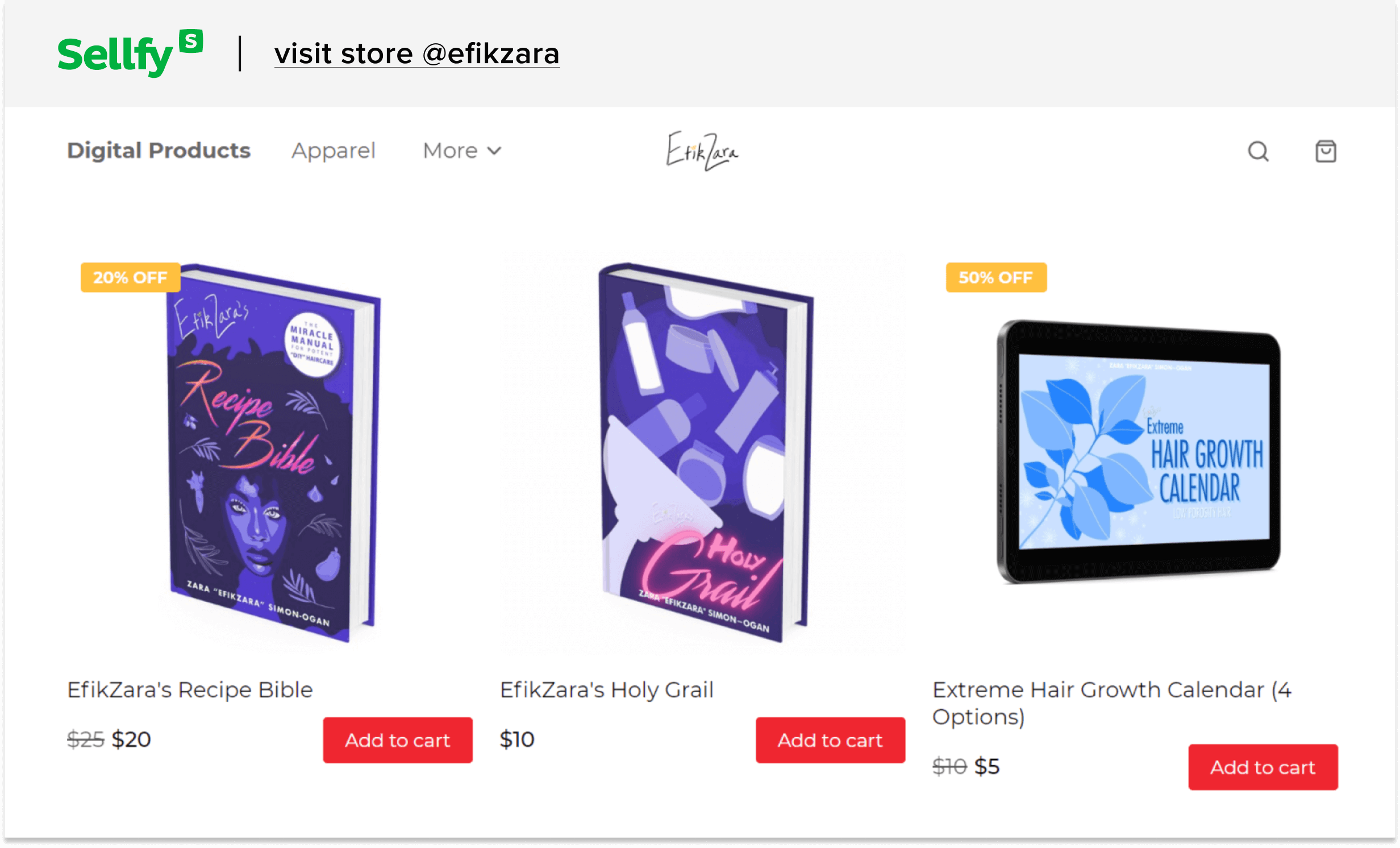
The truth is that nobody wants to start something new without being pre-informed about the potential obstacles. So, selling information drawn from your own experience is a great way to help other people out and earn a living.
Your followers are also more likely to think of you as an established authority figure when you talk about your trials and errors and share the lessons you’ve learned along the way. In short, you can turn all of your experience and knowledge into an information product.
So, let’s jump right into our next topic—product ideas—and help you narrow down your business focus.
Step 1: Decide what products to sell
Choosing the right products to sell is crucial if you want to be successful. To give you some ideas, here’s a list of the best selling information products in 2024:
- Webinars, podcasts and video series
- Ebooks, PDFs and online magazines
- PLR Ebooks
- Educational audiobooks
- Online courses
- Coaching and consulting
- How-to guides and tutorials
- Membership sites with information
- Excel and Google spreadsheet templates
- Checklists and worksheets
- Reports
- Recipes
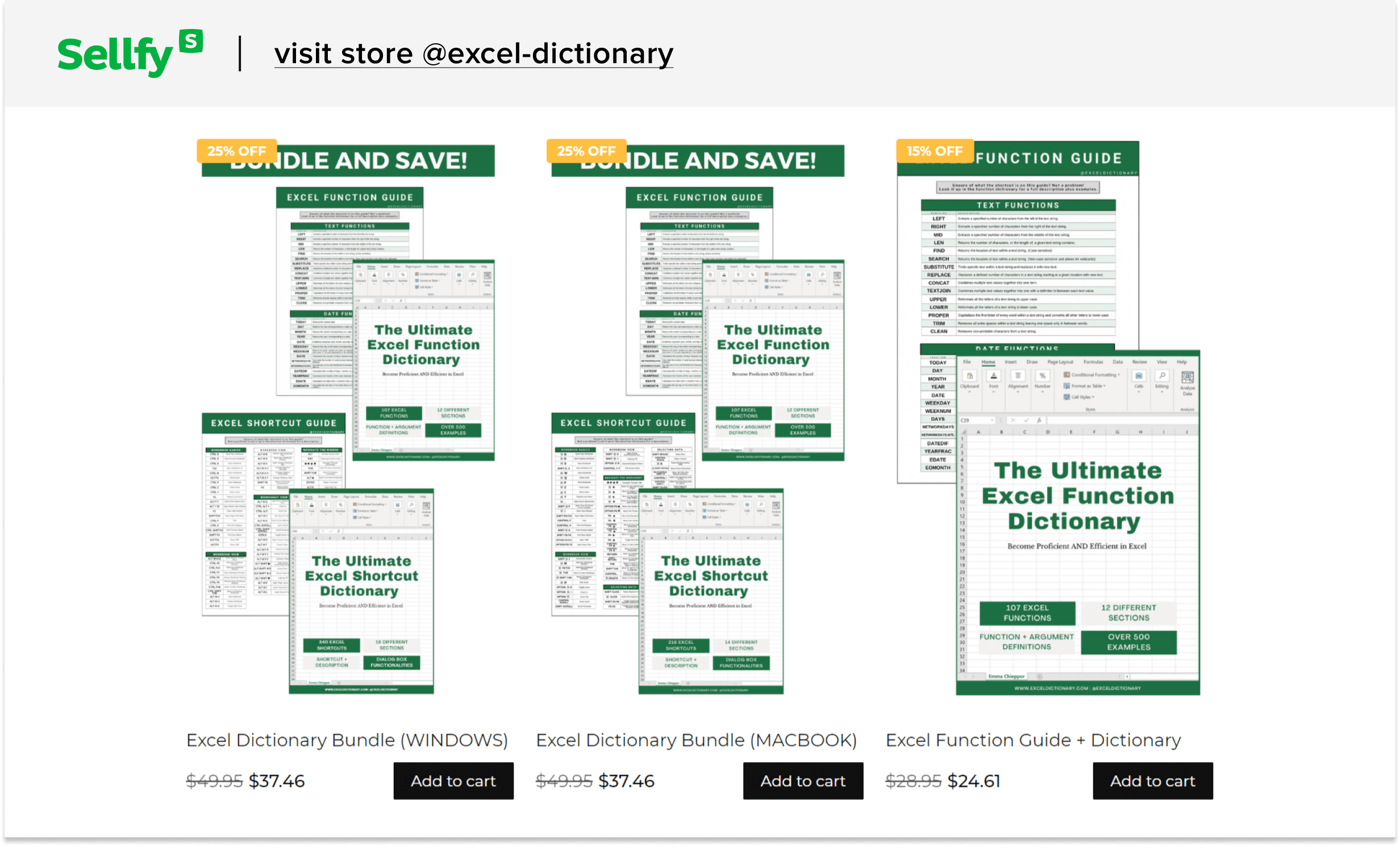
As you can see from the list of information products above, they’re all sold digitally and have a high market demand. According to Statista, subscriptions (videos, ebooks, audiobooks, and online magazines) are the top info products that people spend most of their money on.
But before you pick one of these info products, you need to ensure that it resonates with your target audience—this is where niche marketing comes into play.
Step 2: Look into info product niches
The key to success is not to sell products that cater to the masses, but to sell info products to a specific niche market. That way, your market will be much more saturated and you’ll have less competition.
Here’s an extensive list of some of the most popular info product niches:
- Fitness and weight loss
- Dating and relationships
- Health and lifestyle
- Pets and animal welfare
- Self-care and self-improvement
- Wealth building and finance
- Beauty and fashion
- Parenthood
- Beliefs or spirituality
- Cultural integration or adaptation
- Languages
- Travel, wanderlust or digital nomad culture
- Food and nutrition
- Blogging or vlogging secrets
- Art and design
- Meditation or relaxation
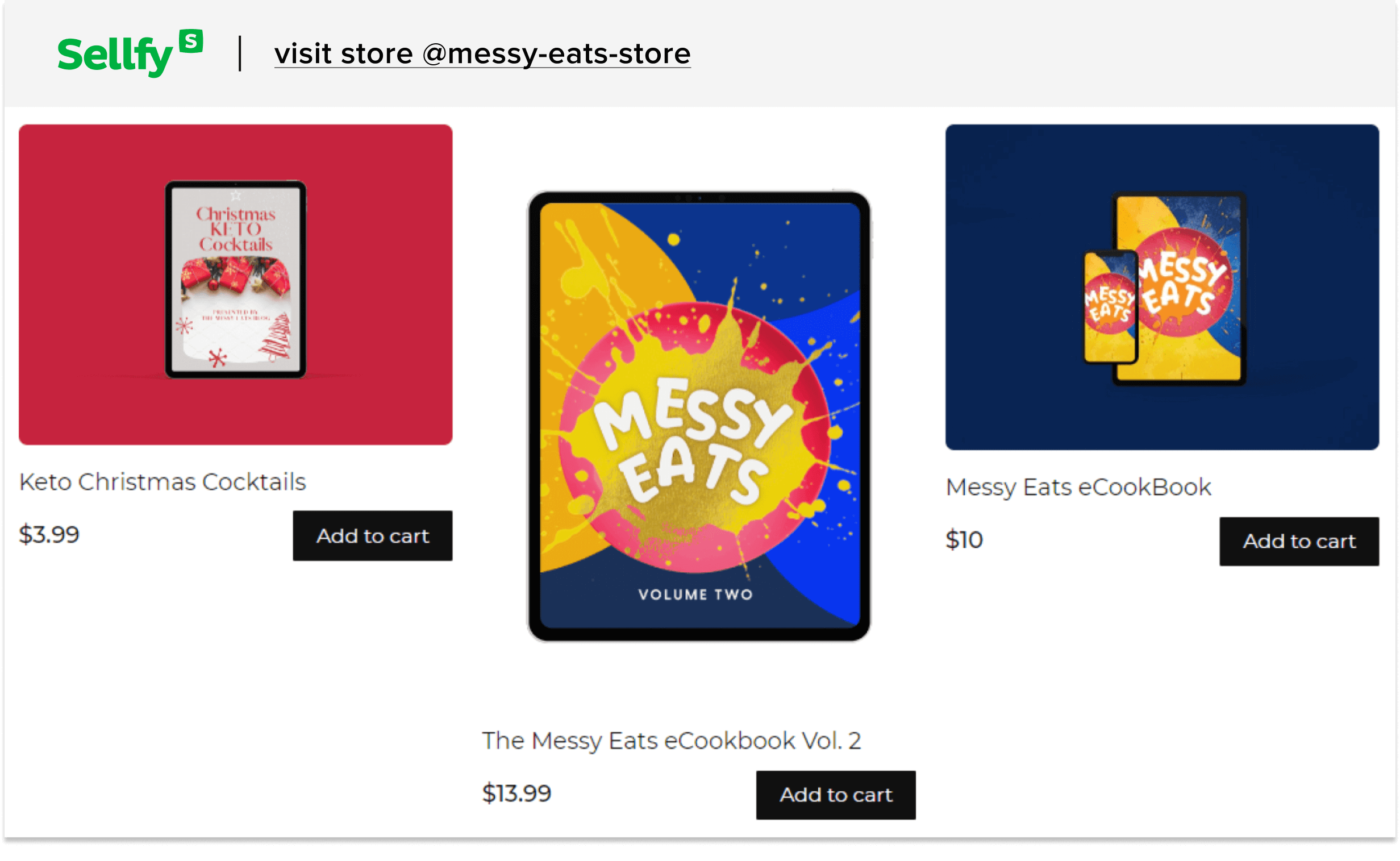
For more on information product examples and niches, feel free to explore our blog post on top 11 highly profitable Instagram niches.
It’s also worth asking yourself:
- Am I highly-skilled, talented, or experienced in something?
- Do I possess unique knowledge about a certain topic or area of life?
- Do I have a passion or a hobby that I’ve mastered?
Another thing to keep in mind is that most people go online for inspiration. Online users are always on the lookout for fresh ideas and trying something new. So, you could use that to your advantage and sell an information product that is highly innovative and inspirational.
Once you’ve identified your niche, you can do market research to see if you have competitors selling similar products or targeting the same audience.
When you validate your idea and get to know your competitors, you’ll know exactly how to make your product even better than the competition.
My suggestion? Try to remain as authentic as possible in the eyes of your audience. Despite what’s currently popular, I’d suggest drawing inspiration from your personal knowledge, experience, and passion. You could also ask your family or friends if you’re unsure. Sometimes, it’s easier for others to identify something exceptional about you.
Step 3: Select the best info product format
We’re one step closer to creating your information product! Now, let’s figure out the best format for your product.
Why does the format matter?
First and foremost, it matters due to the preference of your target audience.
For example, they might love your fitness information product, but not the format (e.g. you’re selling an ebook when your audience actually prefers the video format so they could see you promote fitness in action).
As another example, if your target audience consists of writers, then ebooks, PDFs, or magazines might be more appropriate. Or if you were a painter trying to teach a special painting technique, you might want to consider selling video tutorials.
But what if you’re a jack-of-all-trades? Well, in that case, I’d suggest going for the most popular info product format: video. In fact, a report by HubSpot Research reveals that the majority of people want to see video content.
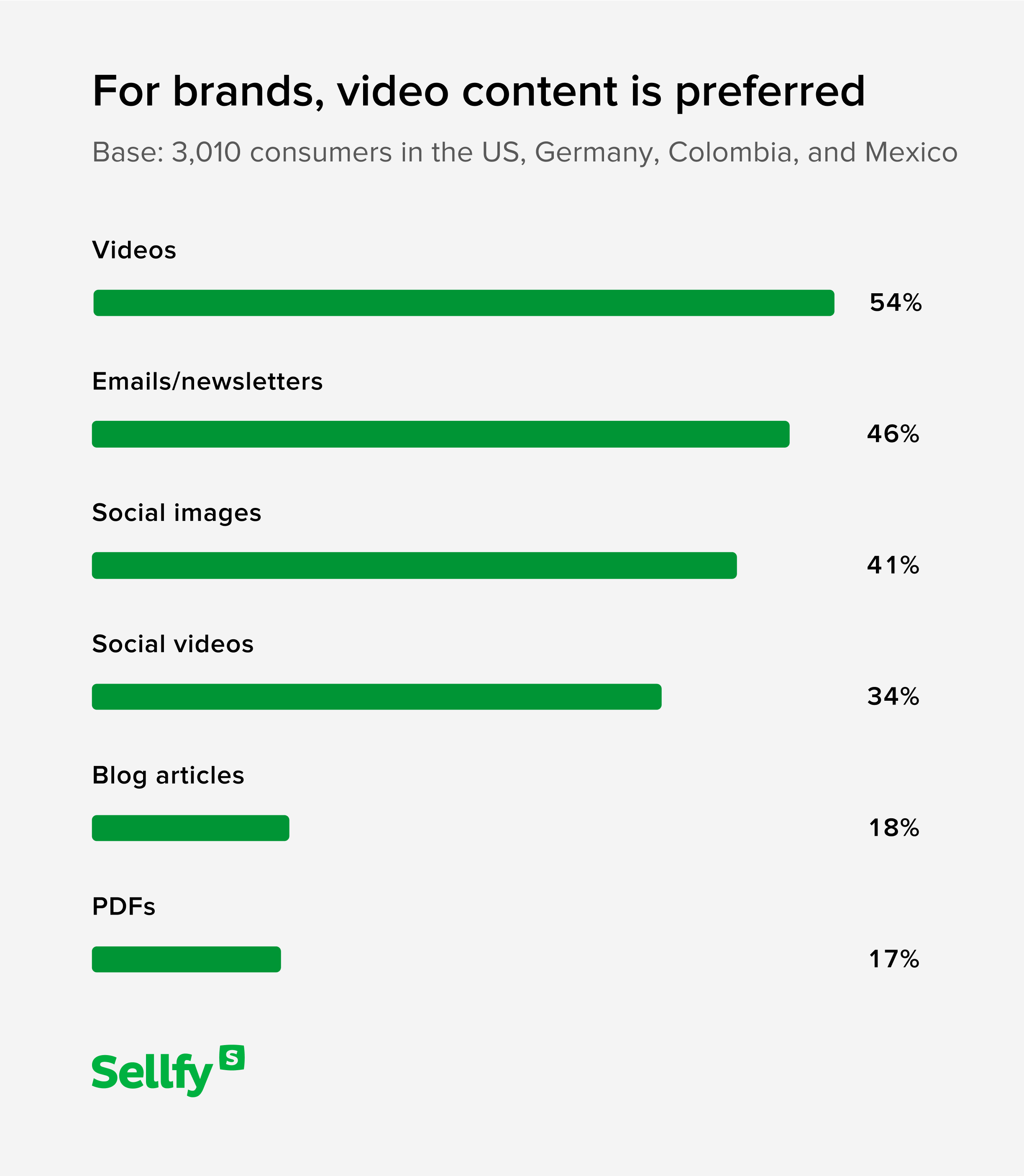
But, ultimately, the format of your info product should boil down to what you’re comfortable with. For instance, do you love writing? Then start with ebooks. Are you great at filming videos and talking in front of the camera? Then create video courses. Camera-shy but love doing live talks? Then go for audio recordings or podcasts.
Whatever you select, keep in mind that the format, the product, and your audience should all go well together. As usual, the best way to find out is to ask your social media followers.
Step 4: Use tools and resources to create your info product
Now that you’ve probably figured out what info product you want to sell, it’s time to explore online tools and resources to create your product. Let’s take a look at free as well as paid ones.
Video and audio product creation
To create video or audio info products, you need filming equipment (a microphone, video camera, or smartphone), good lighting, and a willingness to put yourself out there.
Apps and platforms for video/audio creation and editing:
- Instagram (Stories, IGTV, Live). Film live videos using your smartphone camera or upload videos that have been filmed with a video camera. Use Instagram’s in-app filters and special effects for editing.
- Facebook (Stories, Watch, Live). Almost identical to Instagram, but with its own filters and video editing effects. Use Creator Studio to manage and publish your videos.
- Placeit. Over hundreds of templates available for purchase (e.g. YouTube intros, pre-made slideshows, text on video templates, etc.).
- SoundCloud. Podcast hosting service with in-app podcast recording capabilities for iPhone users (for Android, try Anchor or Spreaker).
- Audacity. Free audio editing application for podcasters.
- Blender. Free YouTube video editing desktop software.
- VideoShow. An award-winning free video editing app for Android.
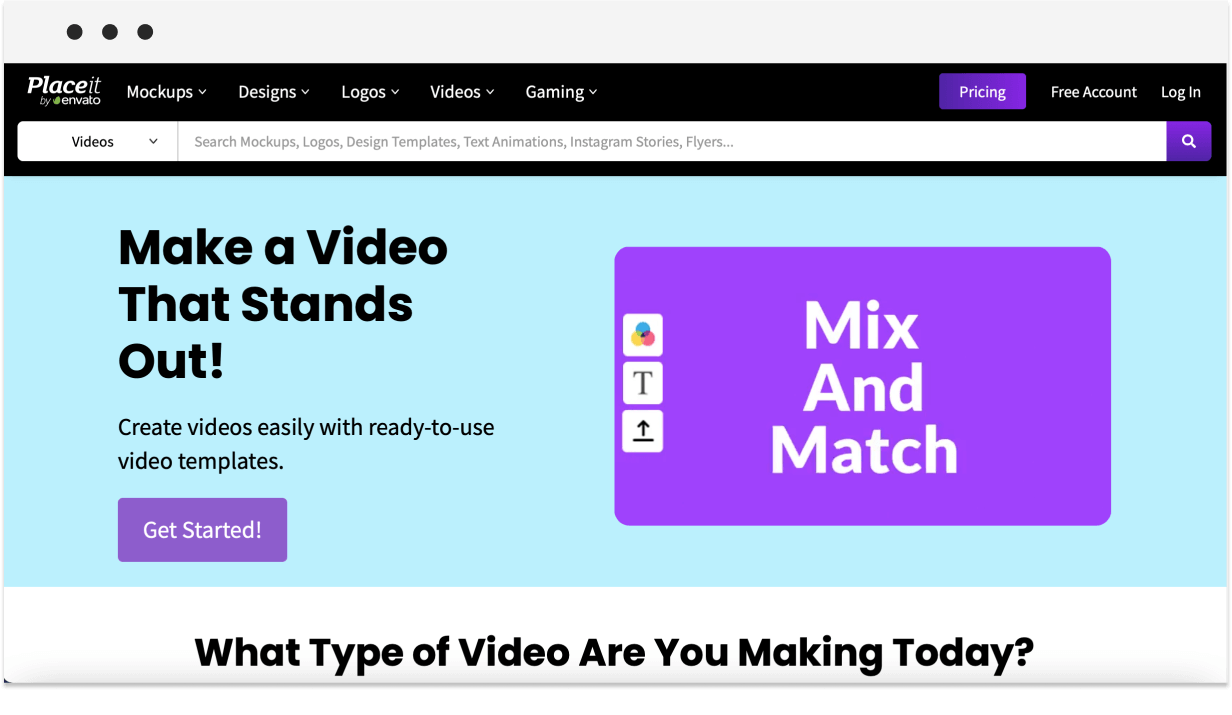
Also, take a look at Sellfy’s articles on creating video content: 27 genius ways to make money on YouTube and how to start a vlog that earns you money.
Ebooks, PDFs, tutorials, magazines, templates, etc.
Educational ebooks, online magazines, and other types of templates have become extremely popular in the social media world. According to Statista, user penetration is expected to hit 15.9% by 2024. That tells you that information products are here to stay. The best part? All you need is a computer to create one.
Platforms and marketplaces with ebooks and other ready-made templates:
- Canva. Designing a high-quality ebook in Canva is free, but you’ll need to pay for any images within your design if you don’t want watermarks.
- Beacon. Free pre-made templates can be used to create ebooks and PDFs or any other type of information template.
- Creative Market. Designer templates available for purchase (from ebook designs and online magazines to cheat sheets, checklists, worksheets, and more).
- Etsy. Another online marketplace that has every template you’ll ever need.
- Blurb. With Blurb’s BookWright software you can create ebooks, PDFs, magazines, and get free customizable templates. You can also use their Adobe InDesign plugin or PDF Uploader.
- Microsoft Office. Premium customizable templates for Microsoft Word (from newsletters to fitness journals).
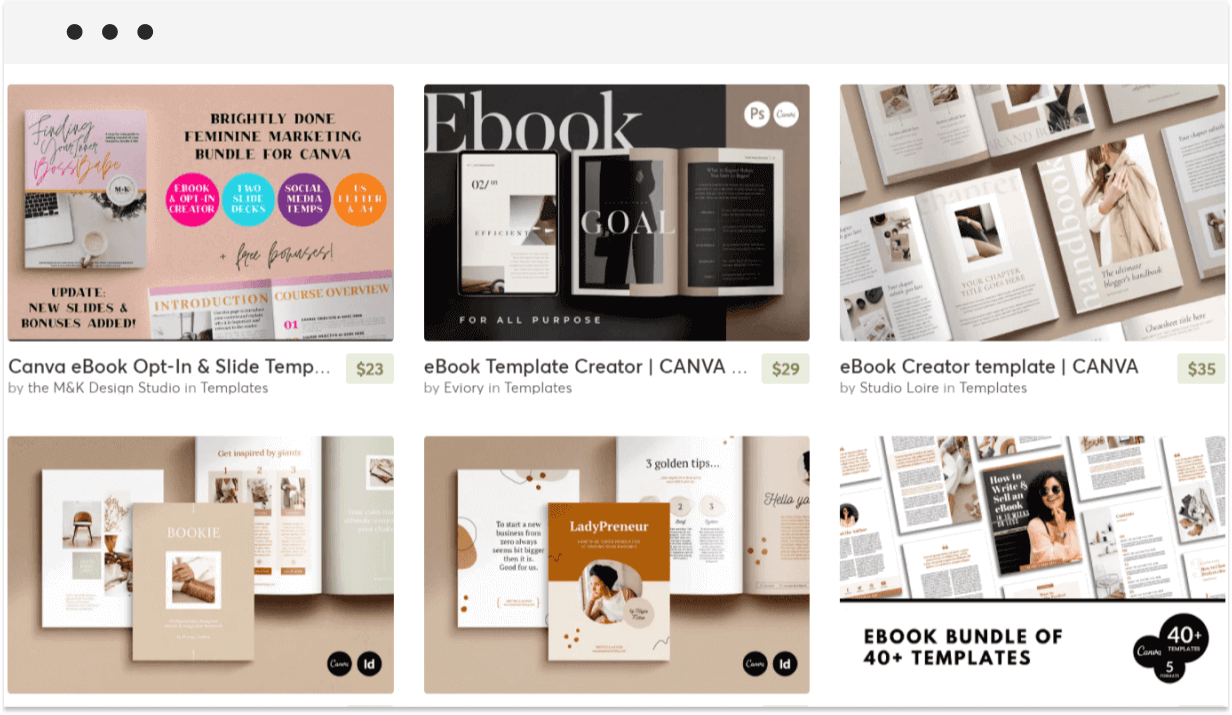
For more on how to create an ebook, feel free to check out our article on 8 free and paid ways to create a kickass ebook cover.
The resources I’ve mentioned above can also be used to create online courses, recipes, tutorials, how-to guides, or any other type of information product. But, for coaching, teaching, and consulting, I’d recommend having your own website.
How to sell an information product
Do you have an info product you want to sell and a target audience? Have you decided on what resources you’re going to use to create your info product?
If you’ve answered yes to all the questions above, you’ve come far enough to start selling.
This brings us to our next big question:
How do I sell my own product?
Let’s find out.
Step 1: Choose the best way to sell
What’s the best way to sell? That really depends on the type of info product you have. There are essentially two options: an online marketplace or a website/eCommerce platform.
Selling information products on a marketplace
The advantages of selling information products on a marketplace include an already established market, a large customer base, easy product shipping and delivery, no concerns over product inventory. The disadvantages include lack of SEO, no store customization, low brand visibility, higher competition, no seller focus, delayed pay-out, no customer loyalty, and analysis.
Top marketplaces and platforms for selling information products:
- Amazon. Selling information products on Amazon can give you international reach thanks to their large volume of consumers. Cons: marketplace fees are deducted as a percentage of each sale, giving you limited control over your earnings. You can sell ebooks through Amazon’s Kindle Direct Publishing or video content through Amazon’s Video Direct. If you want to publish on Amazon, you have to follow their strict guidelines.
- eBay. No restrictions as to what types of digital files you can sell. Con: as a seller, you still need to pay heavy marketplace fees.
- Apple iTunes Store. Catered to authors who want to sell books, videos, and more. Con: a commission on each sale must be paid to iTunes.
- Udemy. The hub for teachers and coaches who want to sell video courses. Con: you only get to keep 50% of the revenue if your customers arrive through organic search.
- YouTube. The most popular option for video content creators who want to combine several sources of income (ad revenue, YouTube Premium revenue, channel memberships, etc.). Con: it’ll take time to gather a substantial audience and start earning. For tips on how to make money on YouTube, check out our article on 27 genius ways to make money on YouTube.
- Vimeo. An alternative to YouTube. Vimeo PRO subscribers get 90% of the revenue after transaction costs. Con: there’s a $20/month fee that is billed annually.
- Skillshare. Another course hosting platform with a subscription model where you can earn with Premium Referrals or Royalties. Con: payments are only sent through PayPal.
- Teachable. Similar to Skillshare, but with more features such as getting your own school website with a blog and unlimited video hosting. Cons: lack of customization, no way to white label your school, no organic traffic.
- Blurb. A self-publishing service where you can sell ebooks, PDFs, and magazines on Amazon, Apple iBooks Store, Blurb’s Bookstore, Ingram, and Kickstarter. Cons: it’s expensive to get started and their software isn’t intuitive.
- SoundCloud. You can earn money with your tracks (podcasts, audio recordings) when you’re eligible for monetization. Con: SoundCloud is a revenue share model, so the amount you get paid varies and depends on how many fans have streamed your tracks. Have a look at our article on how to make money on SoundCloud for more information.
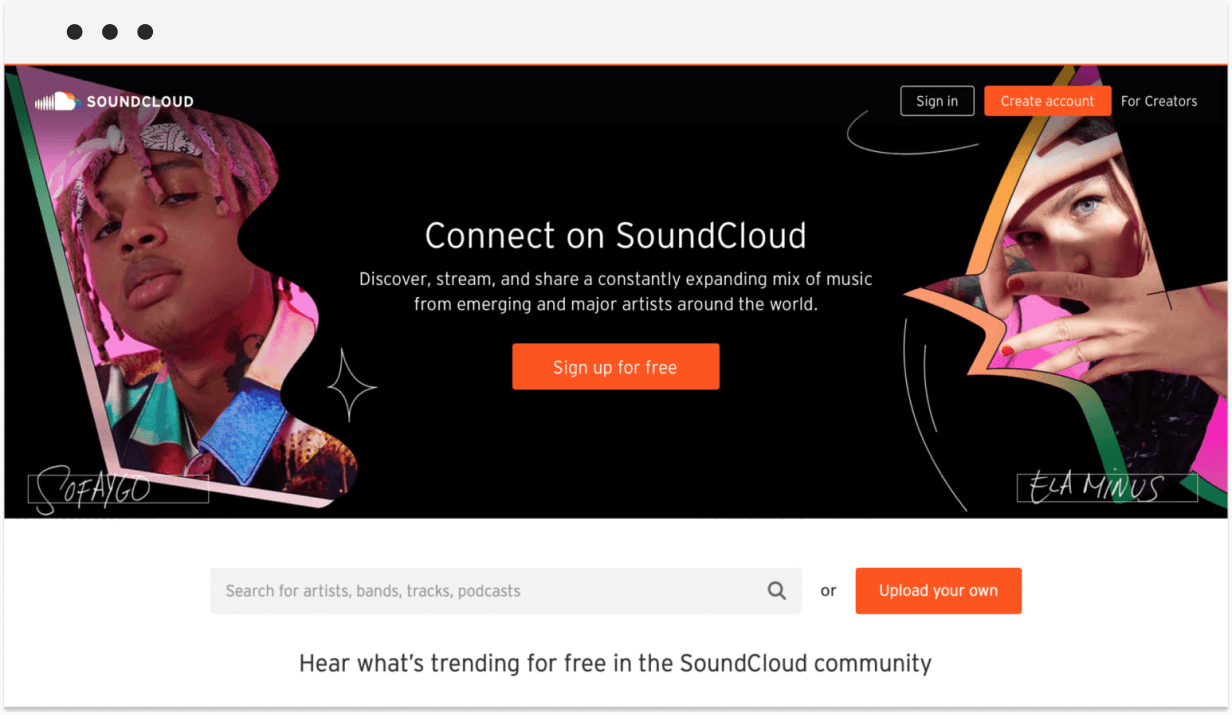
As you can see, most of the online marketplaces have fees and their own rules and regulations. While some of them are great for beginners who don’t have a large following, your product won’t get discovered by customers unless they specifically search for your product. This means that your product has to have very high market demand, and must be niche-specific enough for people to choose you over other competitors.
Selling information products on an eCommerce platform
When you sell information to a niche, you’re establishing yourself as an authority figure in a particular market. This is why having your own website is so important—it gives your brand a more serious and professional vibe. By selling through your own site, you’re also setting yourself apart from other sellers.
The downside to this is that you’ll only get discovered through organic search when there’s enough brand awareness around your product. But, don’t let that stop you from creating your own website. You can always use marketing tools, SEO, and social media platforms to gain recognition.
So, let’s have a look at the top eCommerce platforms for selling information products:
- Shopify. To sell information products on Shopify, you need to download the Digital Downloads app and configure email templates for digital products. Cons: max file size is just 5 GB and you can only upload one file per product; there are also additional transaction fees.
- BigCommerce. An alternative to Shopify that doesn’t have transaction fees. Cons: max file size upload is only 512 MB; difficulty to manage VAT MOSS rates when selling digital products.
- WooCommerce. A free WordPress plugin for selling information products as downloadable and virtual items, including Membership sites and WooCommerce Subscriptions. Another option is to use the Easy Digital Downloads plugin (to get a shopping cart). Cons: this requires a website built on WordPress, which can be quite expensive depending on hosting; there’s no direct tech support either.
- Big Cartel’s Pulley. There are no transaction fees, it’s easy to set up and you don’t need coding experience. Cons: an add-on at the price of $6/month is required for selling information products on Big Cartel.
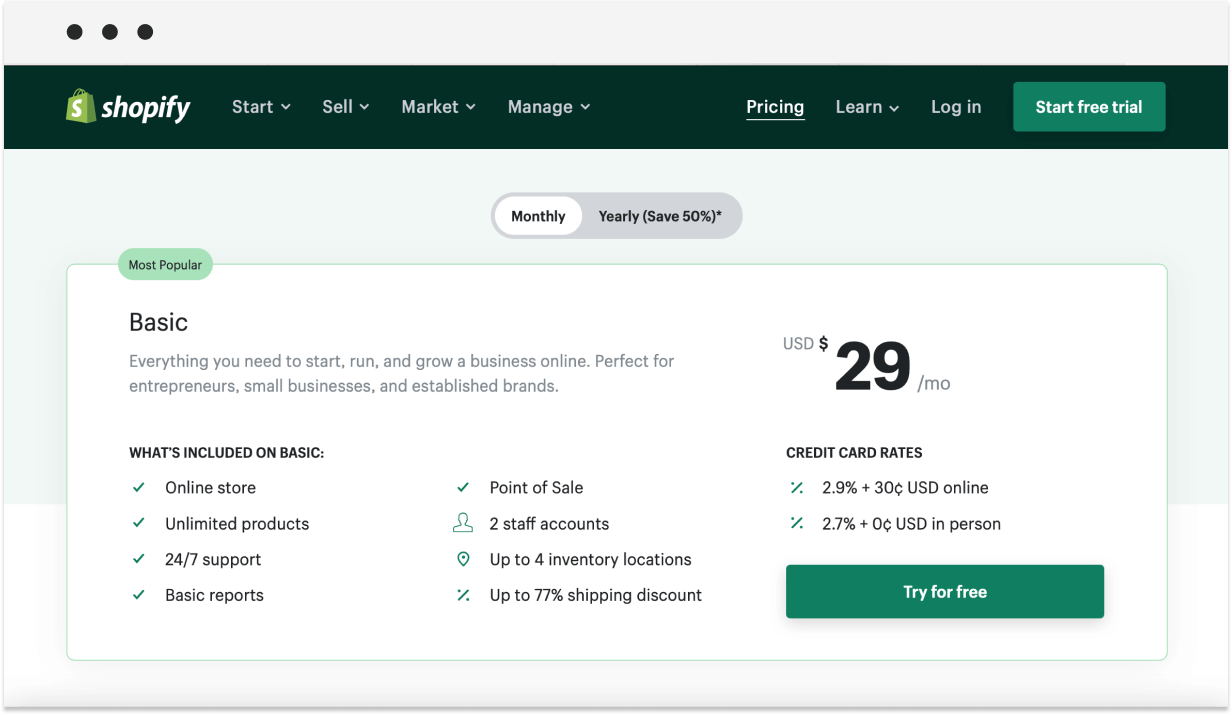
And, last but not least, there’s Sellfy—the easiest eCommerce solution for selling information products. I’ll tell you why in the next step.
Step 2: Create a Sellfy store to sell information products online
So, why Sellfy?
Sellfy was specifically designed for creators who hate complexity but want results. If you’re looking for an affordable all-in-one eCommerce solution that is mobile-friendly, Sellfy’s your answer. The best part? Receiving payments immediately after purchase. Yes, you’ll literally get paid the moment a customer has purchased a product from you.
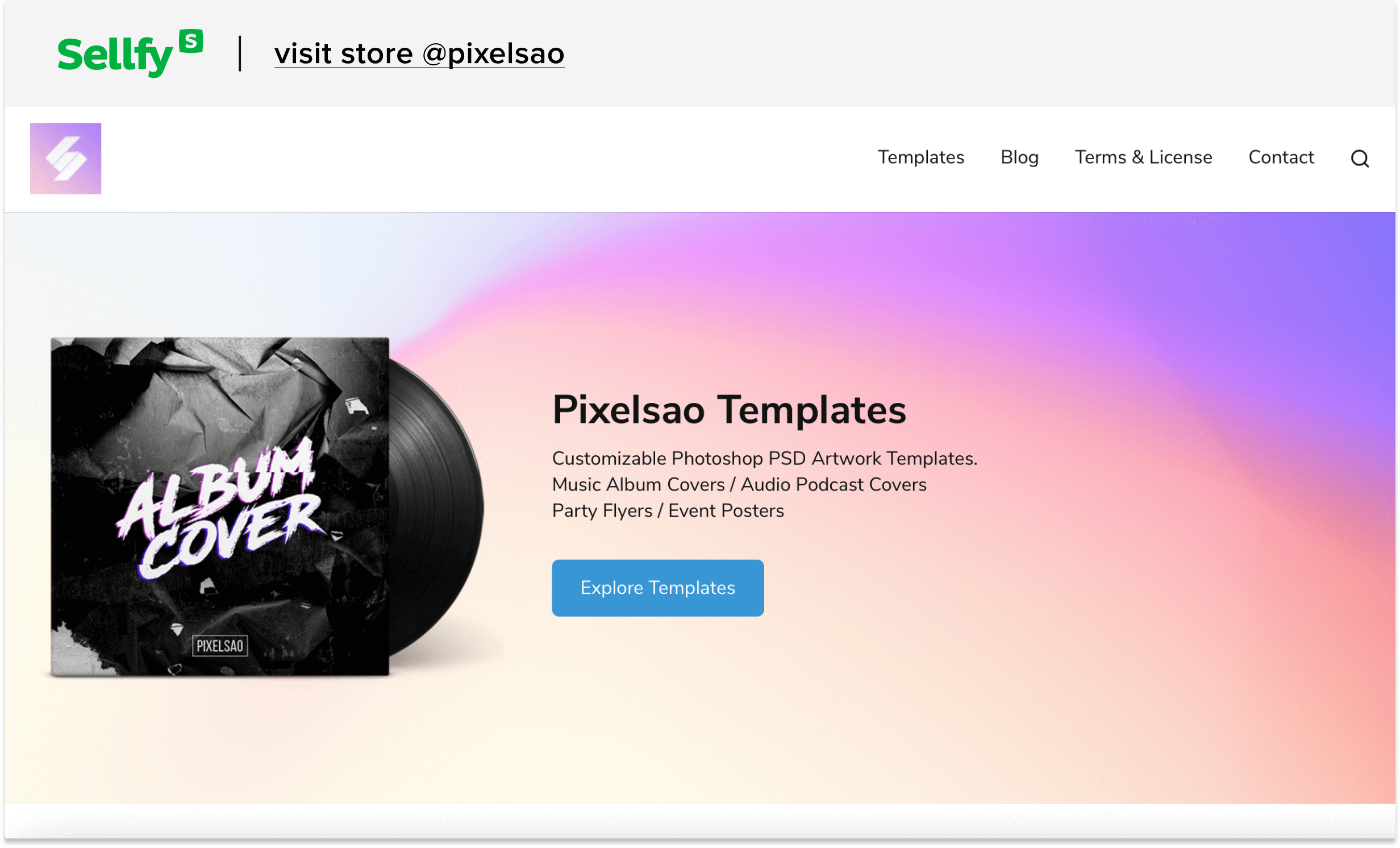
Whether you want to sell subscriptions or information products as digital downloads, Sellfy has everything you’ll ever need. You can literally sell just about any type of info product imaginable:
- Ebooks and PDFs
- Video tutorials and films
- Email newsletters
- Licenses
- Bundled products
- Community memberships
- Services and exclusive content
- Audiobooks and tutorials
Unlike most eCommerce platforms, Sellfy has its own built-in marketing tools, discounts, coupon codes, and so much more. In addition, Sellfy also has unlimited bandwidth and large file support, so you won’t have to worry about storage. You can upload digital files as large as 10 GB, which is twice as big as Shopify’s maximum file size capacity.
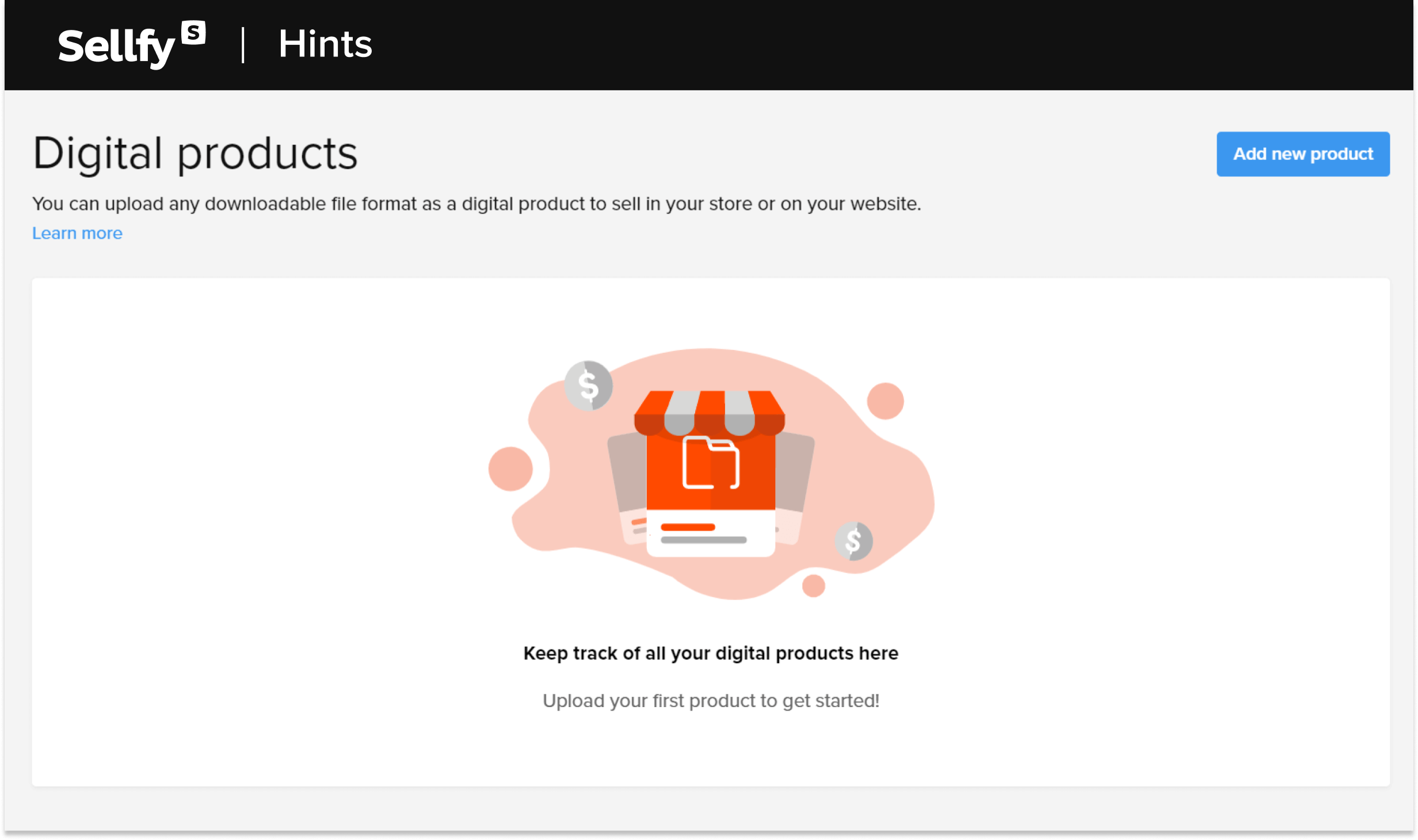
Here are some quick steps to get started:
- Start with a 14-day free trial to get a better feel of Sellfy and then you can choose the plan that fits you best. There are three Sellfy subscription plans available. The best part? No hidden fees or costs. Keep in mind that you can also upgrade your account at any time. An upgrade will give you access to additional features.
- Customize your store, upload digital products, and test Sellfy’s features during your free trial. You can also upload multiple files and streaming videos.
- Download the Sellfy mobile app in the App Store or Google Play to have a constant overview of your sales data, analytics, and order history. The app will also notify you of new orders and send useful reports.
- And, most importantly, make maximum use of Sellfy’s built-in marketing tools.
Another great thing about Sellfy is that it integrates easily with PayPal. Learn how to use this integration to your advantage in our article on how to sell digital downloads & PDF with PayPal in 4 easy steps.
Step 3: Promote your info product
Now, here comes the final part: promoting your info product. This is especially crucial if you have your own website. To be able to reach your target audience, you need to come up with a marketing strategy.
Here’s how to promote your info product, sell more, and gain new customers:
- Instagram. If you’re looking for a way to promote on Instagram, follow our guide on how to switch to a business account, create engaging content and get the most out of Instagram Stories, advertising, selling tools, and shopping. You can also head over to our blog article on 23 ways you can increase engagement on Instagram and check out some of the best Instagram marketing tools you should know about.
- Facebook. While you can’t sell digital downloads on Facebook, you can still use the platform to promote your information products with ads. One of the best marketing tactics is to create a Facebook Page and a Group, and then link them together. Use this to your advantage to establish yourself as an authority figure in your niche, so when people google your name or product, your page shows up. You can use that page to create ads and marketing campaigns. If you’re using Sellfy, check out Sellfy’s Facebook integration.
- Paid or targeted ads. Organic traffic doesn’t always bring in sales, so another option is to opt for paid advertising. You can use Instagram or Facebook to create targeted ads. For instance, you can boost a post on your page for better visibility. Instagram and Facebook are quite similar in terms of advertising, but there are also key differences that may affect your revenue. Unless you plan on using both, we recommend reading Sprout Social’s article to understand which one is better for your business.
- Analytics and discounts. To understand how your business is performing, you should look into Instagram Insights, Google Analytics or Sellfy Analytics. Another great tool is Sellfy’s Discount Manager for creating discounts, sales, and coupon codes.
- Email marketing. You can easily run email campaigns with Sellfy’s built-in email marketing tool and target specific audiences. Use this tool to notify your customers of new product launches, deals, updates, giveaways, etc. Sellfy also makes sure that your email list complies with GDPR.
- Cross-selling and upselling. Upselling is about persuading your customer to buy something additional, and cross-selling is about offering complementary products to customers’ orders. You can sell more with Sellfy’s upselling feature and collect newsletter subscribers, send product updates, add Facebook ad pixels to create ads, etc.

Time to start selling your information product
As you can see, with the right tools and resources, selling information products online can be a very profitable way to earn an income. As long as you stick to a marketing plan and implement the actionable tips I’ve given in this article, you’re good to go! If you found our article helpful in kickstarting your information product business, feel free to let us know in the comments.
FAQ: selling information products
What is an example of an information product?
An information product is a digital product that provides information to the consumer. It can take many forms, such as an eBook, video course, or online webinar. Some examples of information products include self-help books, cooking guides, fitness programs, and business courses.
Information products are often created to solve a specific problem or provide guidance on a particular topic. They are typically sold online and can be a lucrative source of passive income for creators.
What is the best way to sell an information product?
Sellfy is a popular platform for selling information products online. With Sellfy, you can customize your site and choose a store design that aligns with your brand. To get started, you’ll need to create an information product and sign up for Sellfy. Then, upload your product, set the price, and promote through social media channels.
How do I market my information product?
You can use Sellfy’s powerful marketing features like discount codes and email campaigns to reach potential customers. Other features include upselling, offering freebies, cart abandonment recovery reminders, and social media integrations. Additionally, consider promoting on social media and actively engaging with your customer base.






